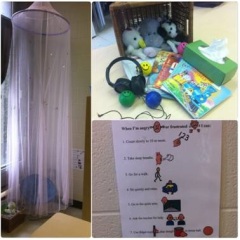I teach a small group of diverse students with various needs. None of the children have formal diagnoses but some of the students are being supported with an Individual Education Plan to work towards specific behavioural goals.
I have recently tried a new key strategy that my Mom shared with me, over dinner, in the classroom; the “you” statements. This strategy has revolutionized the way I think about behaviour management and the needs, wants and feelings of young children in an integrated early learning classroom. I ask myself the following questions regarding the child. Why are they doing what they are doing? What is their motivation? What are they trying to tell me? The “you” statement acknowledges what they are doing or saying as positively as possible. Continue reading




